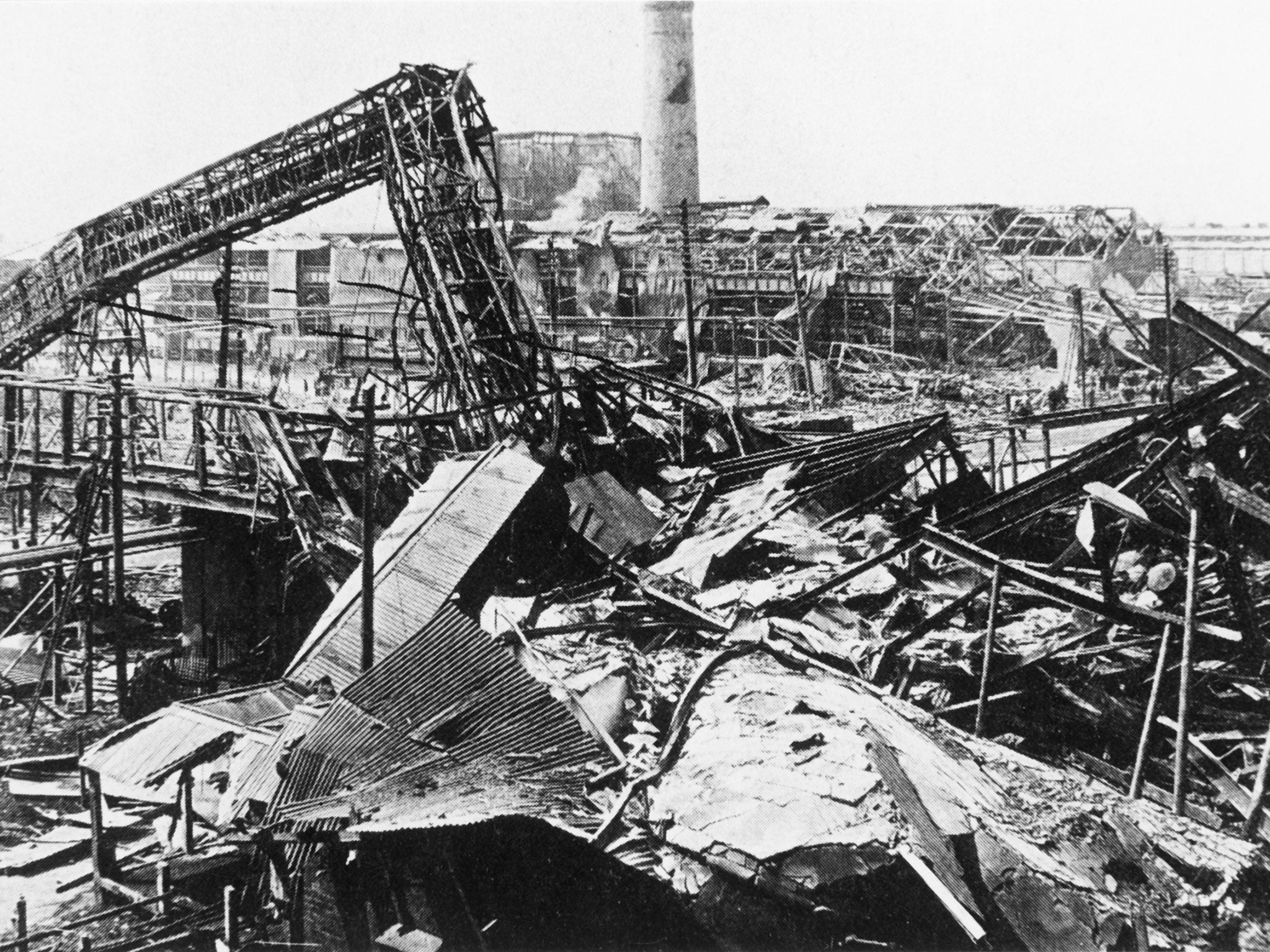A History of the First World War in 100 Moments: When corpses fell from the Nottinghamshire sky
An explosion at Britain’s biggest munitions plant killed 134 workers, but news of the disaster was suppressed

Lottie Martin was not on shift that hot Monday evening. The window was open at her home in Greyhound Yard in Beeston, Nottingham, and the 19-year-old was doing the washing up. Suddenly the house moved. “I looked up to the window and a huge mushroom spiral of smoke rose into the air,” she later recalled.
Bert Smith, eight, was playing cricket after school when the blast nearly knocked him over. A plume of dust and debris hid the sky. “It seemed to be rolling and everybody was looking at it with their mouths wide open,” he said.
But no one was in any doubt as to the cause of the explosion. Heard 30 miles away, it was one of the deadliest of the war, claiming the lives of 134 munitions workers. That it occurred not on the battlefield but on the otherwise peaceful banks of the river Trent only added to the horror. The cause was never established – or, at least, never admitted. Despite accusations of sabotage – with everyone from German spies to anarchists and the IRA being blamed – lax safety and overheating were the most likely causes of the accident at the National Shell Filling Factory No 6.
The vast munitions plant had sprung up across the once open fields of the village of Chilwell three years earlier as Britain struggled to produce enough explosive power to break the long stalemate on the Western Front. Lottie Martin was one of the Canary Girls who toiled there, so called because exposure to toxic chemicals turned their skin yellow and their hair green. She understood instantly the devastating implications of the blast and ventured out into the street as the rescue effort – such as it was – got under way, continuing until after midnight. Carts laden with the dead and injured filled the streets. “Men, women and young people burnt, practically all their clothing burnt, torn and dishevelled. Their faces black and charred, some bleeding with limbs torn off, eyes and hair literally gone,” Lottie Martin was later to write.
Bert Smith, too, recalled a haunting scene. “This wagon was piled up with… half-naked, blackened bodies and the arms and legs were hanging over the side. There was blood trickling out of the back of the wagon. I felt like I had a nest of rats inside my belly… what I saw there I will never forget if I live to be as old as Methuselah.”
Other witnesses described corpses falling from the sky. But only a handful of bodies were recovered. The death toll was pieced together from shift rosters. Many of those who died were young women with male relatives fighting in France. Their remains were buried in three mass graves at St Mary’s Church at Attenborough. A further 250 people were injured.
Chilwell was vital to the war effort and the forthcoming summer offensive that was to yield Allied victory. It is estimated the plant would produce some 19 million shells – half of all those used by the British during the war.
That may explain why news of the blast was suppressed: just a single paragraph was allowed to be published in the newspapers, announcing “60 feared dead in Midlands factory explosion”.
Despite their loss, all but 12 of the 7,000 surviving workers were back at the machines the following day. A month later, Chilwell claimed to set a new production record. Winston Churchill, then Minister of Munitions, sent a telegram commending the “courage and spirit” of those who had died at their stations.
Later, there were calls for the factory to be awarded the Victoria Cross, but official recognition was withheld, The Chilwell explosion has never been forgotten locally. But the official report into the disaster was never published.
Tomorrow: Burying the dead at Chateau-Thierry
The '100 Moments' already published can be seen at: independent.co.uk/greatwar
Join our commenting forum
Join thought-provoking conversations, follow other Independent readers and see their replies
Comments